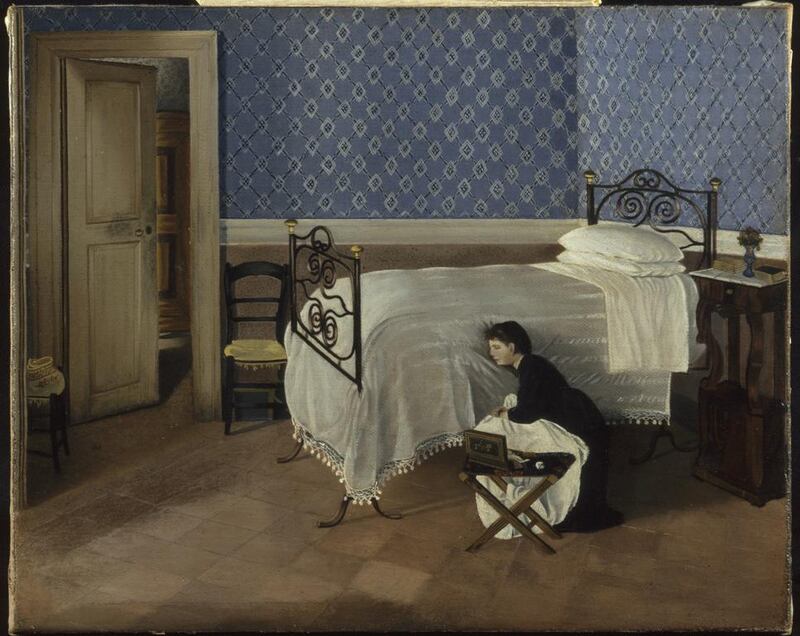It doesn't take the reader long to realise that nothing is quite what it seems in Cristina Fernández Cubas's short story collection Nona's Room. The book – the first of Cubas's work to be translated into English, by Kathryn Phillips-Miles and Simon Deefholts – is an invitation to step through the looking glass. The slight shift in perspective that this entails is all that's needed to expose the blackness lurking all around – from actual monsters hidden behind closed doors to the horrors of strange tricks played by unstable minds.
In the story with which the collection opens (and from which it also takes its title), a teenage girl struggles with the attention given to her "special" sister Nona, a description that the girl comes to understand "didn't necessarily mean something good". As it's slowly revealed just how unreliable a narrator we're dealing with here, what begins as a tale of seemingly ordinary sibling rivalry soon morphs into something much more distressing. Interestingly, the same topic rears its head in the concluding story, A Few Days with the Wahyes-Wahno. This time, however, it's adult siblings who play out the pattern of "bitterness and hatred" forged during their childhoods. Unconsciously transmitting this model of interaction from one generation to the next, this jealousy bubbles along in the background while a narrative concerning their formative years takes centre stage. While their father lies gravely sick at home, the 13-year-old narrator and her younger brother are sent to spend the summer with their aunt and uncle, "to breathe the pure mountain air, eat fresh eggs and drink goat's milk straight from the goat." Of course, what this so-called rural idyll actually offers them is far from a life of straightforward, carefree simplicity.
Adolescence, with all its emotional turbulence and physical transformation, naturally allies itself with Cubas's slightly off-kilter worldview. As such, when she turns her attention to older protagonists, the effect is slightly less successful. The mature woman who checks herself into a Madrid hotel in A Fresh Start actually encounters the opposite. Stuck in what appears to be some kind of time warp, she finds herself somehow reliving episodes from her youth: "Today, the present has slipped into her past". The story makes for disconcerting reading, but it lacks the punch of some of the other tales. Not that this change of pace isn't welcome, if only to provide some variation on a modus operandi that might otherwise come across as repetitive. Nestled, for example, in between two narratives that deal in subtler shocks, is Chatting to Old Ladies. Of the six stories in the collection, this is the one that deals in more traditional horrors of Grimm's fairy tales, albeit with a contemporary twist: Room meets Hansel and Gretel.
All the same, Cubas's take on the Gothic is not quite like anything else I've read, not least because of the arresting central story in the collection, Interior with Figure – which takes its name from a painting by the 19th-century Italian artist Adriano Cecioni that features a young, scared-looking girl crouching beside a bed in a sparsely furnished room. By this point we've been lulled into assuming that what we're reading are works of fiction, but no, this is something else entirely: an account of an unnerving encounter that took place in Cubas's own life (or so we're led to believe) is the "inspiration" for a story (or so she declares). But whether this is it, we can't be quite sure. The girl in the painting reminds Cubas of a character in one of her stories –Nona – she explains, but there's another girl here who piques her interest more: a jittery schoolgirl also visiting the art gallery. Rather than re-establishing our connection to the real, this fusing of fiction and actuality right in the middle of the book is surprisingly unsettling.
Phillips-Miles and Deefholts’s translation breathes just the right amount of animation into Cubas’s work. Further evocation of the uncanny atmosphere that infuses the text, the lucidity of their prose sits gloriously at odds with what it’s describing. “It’s as if she’s not seeing the same thing as everyone else,” says Cubas of the schoolgirl transfixed by the Cecioni painting, “or at least not in the same way.” The strange creepiness of these stories suggests the same might be said of Cubas herself. She’s able to cut through reality and see something else within– things the rest of us don’t, can’t or won’t allow ourselves to see. Reading this collection illuminates the darkness, but be prepared: it’s not a pretty picture.
Lucy Scholes is a freelance journalist based in London.










